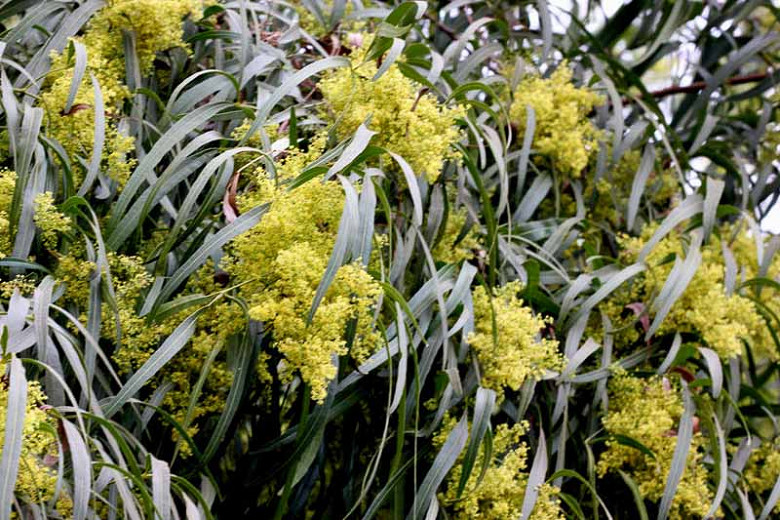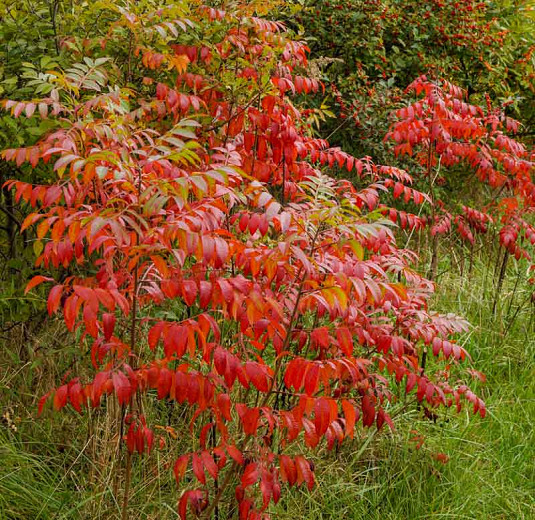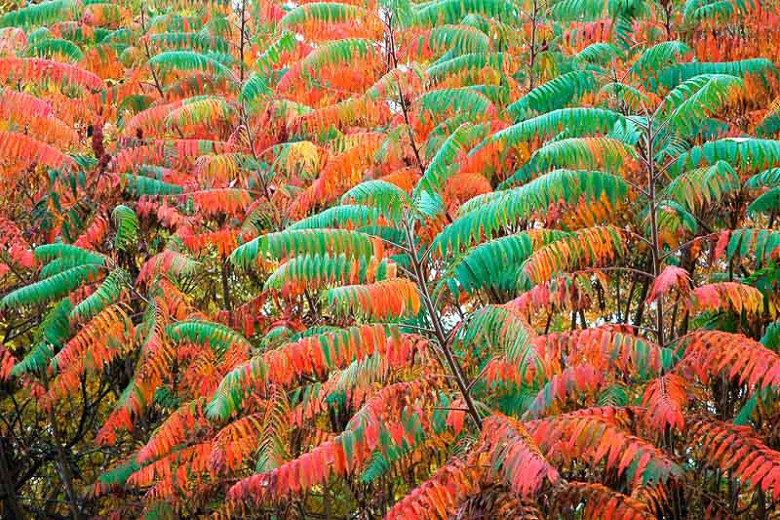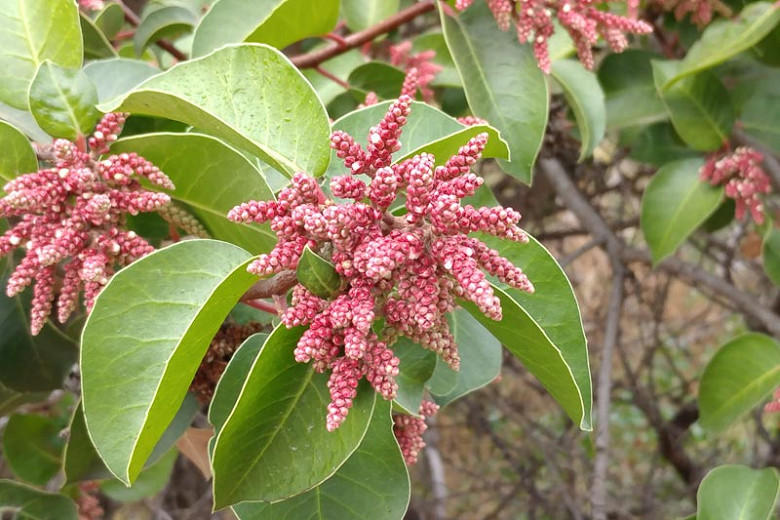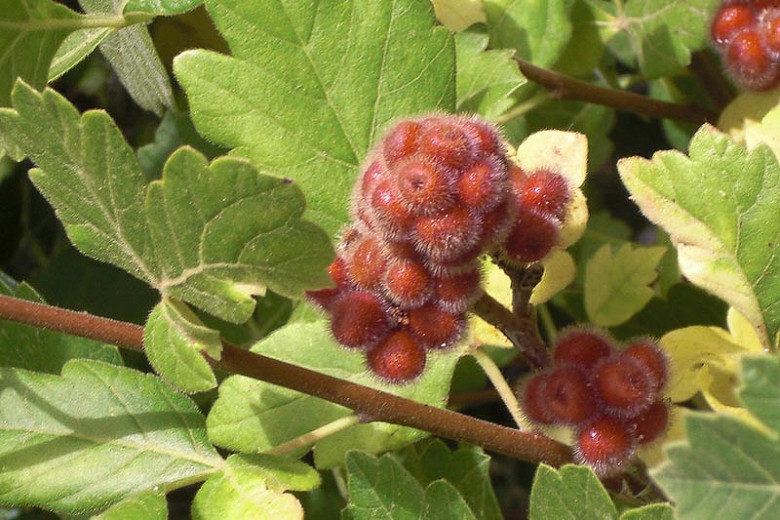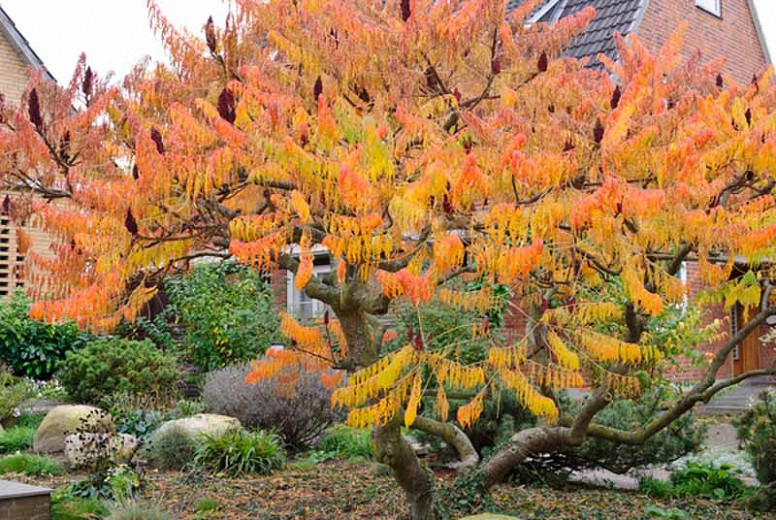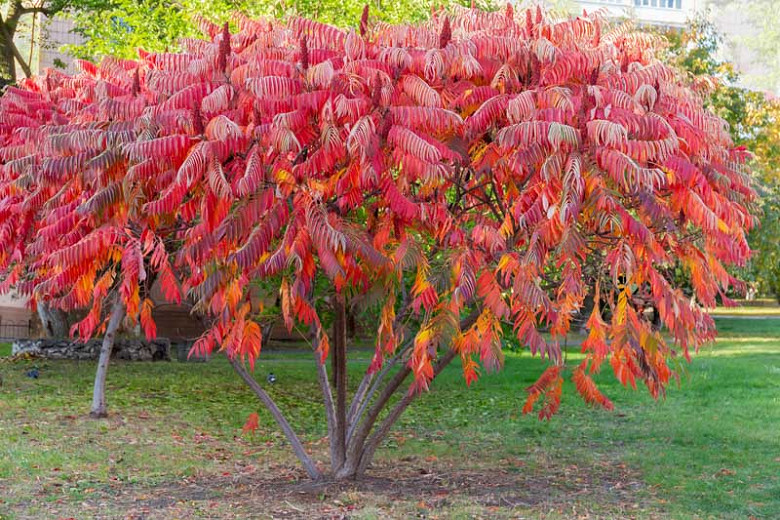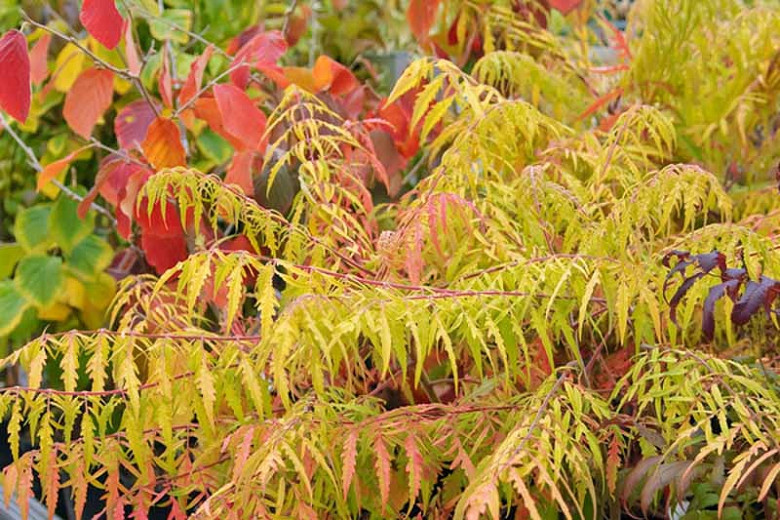Searsia lancea (African Sumac)
Native to South Africa, Searsia lancea (African Sumac) is a small to medium-sized evergreen tree with a rounded, wide spreading canopy and gracefully weeping foliage. Multi- or single-stemmed, it produces an abundance of alternate and spirally arranged lanceolate leaves, 4 in. long (10 cm), in clusters of three. The fine textured foliage of smooth, leathery leaves is dark olive-green above and slightly paler underneath. The leaves exude a resinous fragrance when crushed. Sweetly scented, inconspicuous greenish yellow flowers borne in dense, terminal clusters give way to clusters of edible green berries that ripen to brown and are borne on female plants. Birds feast on the fruits. In older trees the trunk is often twisted and the dark brown bark becomes rough and irregularly fissured over time. Tolerant of heat, aridity, poor soils, drought and salty conditions, African Sumac is a great choice for arid or coastal gardens. Low maintenance, it makes an excellent shade tree and can be used as a windbreak.
- Grows up to 20-30 ft. tall and wide (6-9 m). Adds 24 in. per year (60 cm). African sumac is a moderately rapid grower, however, its growth rate and mature size are directly related to water availability.
- Performs best in full sun or part shade, in dry to moist, alkaline, well-drained soils. African Sumac is adapted to normal winter rainfall and low amounts of summer irrigation. Drought tolerant once established. Fertilize with a slow-release fertilizer once per year in the spring just before new growth begins.
- Keep an eye out for root rot and verticillium.
- Prune to establish and maintain an upright and arborescent crown architecture. Prune while it is dormant during the winter months.
- Propagate by seeds.
- Native to South Africa.
Requirements
| Hardiness | 9 – 11 |
|---|---|
| Climate Zones | 8, 9, 12, 13, 14, 15, 16, 17, 18, 19, 20, 21, 22, 23, 24 |
| Plant Type | Trees |
| Plant Family | Rhus – Sumacs |
| Exposure | Full Sun, Partial Sun |
| Season of Interest | Spring (Early,Mid,Late)Summer (Early,Mid,Late)FallWinter |
| Height | 20' – 30' (6m – 9m) |
| Spread | 20' – 30' (6m – 9m) |
| Water Needs | Low, Average |
| Maintenance | Low |
| Soil Type | Clay, Loam, Sand |
| Soil pH | Alkaline, Neutral |
| Soil Drainage | Moist but Well-Drained, Well-Drained |
| Characteristics | Showy, Evergreen |
| Tolerance | Drought, Salt |
| Attracts | Birds |
| Garden Uses | Hedges and Screens |
| Garden Styles | Coastal Garden, Informal and Cottage |
